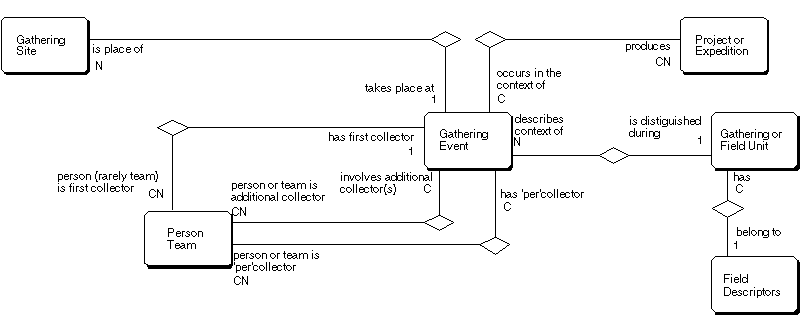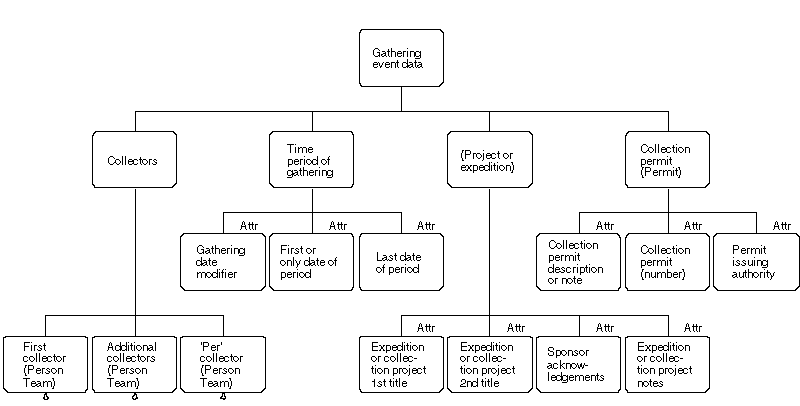
Diagram 6 illustrates the Gathering Event within the ER model. Collector information is realized by links to the Person Team entity (which may include a single person). Project or Expedition information resides in a separate entity named accordingly.

Diagram 6: Relationships of the Gathering Event (Entities)
The data used to describe the event are detailed in Diagram 7. The first collector is normally a single person who holds the field book to which the collection or observation number refers (see Gathering or field unit data). In the case of unorthodox numbering schemes, this could also be a collector team, an expedition, etc. The numbering bears no relation to additional collectors participating in the event (who in herbarium labels are listed after the first collector and collection number, sometimes following a "with" or "cum"). The 'Per'-collector is an amateur or casual collector who collected specimens for the first collector, who takes the credit for collecting by assigning his collection number. Croft (1992) introduces this attribute because "it is not possible to insert this type of information … in any manner that does not misrepresent the situation"). Use of this attribute for new collections should be discouraged. The gathering date modifier contains a textual expression of the (in-) exactitude of the time or time period of the gathering (e.g. "ca."). The dates themselves should ideally be exact, however, especially historic collections often cite periods, or only the year is given. The respective attributes must therefore accommodate incomplete dates (i.e. month and year, or year only). Project or expedition information is often cited on labels. Attributes for first and second title as well as for sponsor acknowledgements were separated to facilitate herbarium label design. Possession of specimens from some countries may be illegal if a valid collection permit has not been obtained.

Diagram 7: Data structure of the gathering event
A gathering event may in some specific cases be related to more than one collection site (e.g. seed collections). If this occurs frequently, a many-to-many relationship between Gathering Event and Gathering Site may be implemented. Alternatively, such cases can be treated as a merging of separately collected original units into a mixed derived unit (see below under Unit, Derived Unit Creation Event).